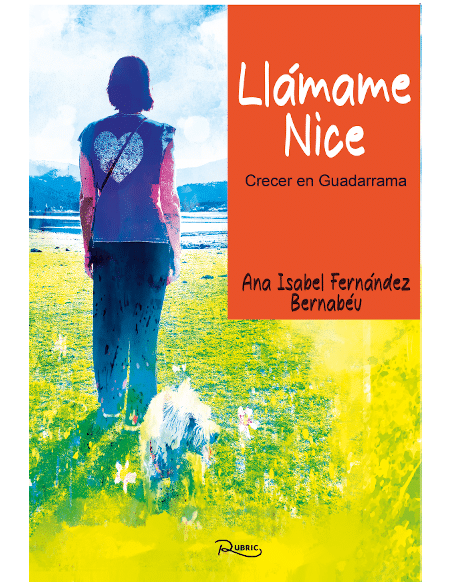
The writer Ana Isabel Fernández Bernabéu returns to the literary scene to tell us the story of a teenager, an only child, who lives an ideal life, but with suspicions that there is a family secret that she is completely unaware of. “Call me Nice. Growing up in Guadarrama” narrates, as if it were a diary, the most intimate feelings, the doubts, the joys, the fears of this young woman who will face the risky adventure of discovering the darkest side of her family.
Berenice – the protagonist – still remembers when she was little and her parents decided to move to Guadarrama, a town in the mountains of Madrid, to recover the family stability that was broken by a phone call. From that moment on, the suspicion that his family was hiding something from him always lingered in his head and was projected in his dreams.
Ana Isabel Fernández surprises with a simple and direct narrative style that turns “Llámame Nice” into almost a diary in which the young Berenice narrates her experiences, her first loves, her youthful insecurities. In this way, the reader enters the mind of the protagonist in a much more intimate way and even comes to identify with her by living the experiences that this stage of life brings, such as the arrival of first love.
Precisely, love is one of the great themes that focus the author’s attention. The love towards the opposite sex, that of a best friend, towards nature and animals, that of a father and, the strongest and most primary, that of a mother towards her daughter. Berenice moves in this idyllic world until she begins to notice that, in her family, there are questions that do not have a clear answer. And with them come doubts, fears and the challenge of trying to discover a truth that has been silenced for years.
Ana Isabel Fernández Bernabéu is committed to personal improvement and growth in the face of adversity. With her, we live the protagonist’s path to maturity and discover how love in all its forms and manners prevails immutably in the face of all adversity. Between the lines, it is reflected how gestures, looks, smiles, hugs or respect have much greater meaning than words or actions.
“Llámame Nice” has the town of Guadarrama as its main setting and reflects the author’s love for nature and animals. In fact, throughout its pages the reader will find numerous references to hiking trails and emblematic natural gems that intersect in Berenice’s daily life, creating an atmosphere full of freedom that contrasts with the family’s secrecy regarding certain topics. .
The author surprises the reader with a seemingly simple story that fills out and becomes more complex as the reader progresses. Its pages are a whirlwind of feelings on which to get carried away to remember that stage of life marked by rebellion and the desire to want to know about everything, at the risk of sometimes discovering things that are not pleasant.
“I spent years without being able to cry. The tears did not come. He cried only in his dreams. It wasn’t news to me. I write this story because forgiveness is painful. And the words flowed when I heard my daughter crying. Now he is in his father’s arms. She is a very dear girl. Her father calls her Nice. He says it couldn’t be called anything else. He has just sat her in the high chair to feed her. The hair is the color of copper and the eyes compete with the sea. When I see her asleep she seems like a goddess to me and it scares me. And I cry. Because since my daughter was born I can cry.”
*Original content provided by the publisher
A story set in Guadarrama where the life of a teenager passes in an idyllic way until she decides to confront her family to discover the dark secret they hide.
Source: https://algunoslibrosbuenos.com/llamame-nice


